
|
The manatee, also known as the 'sea cow', is one of the most gentle creatures of the ocean. Like the dolphins and whales, it actually originates from land, being an animal that returned to live in the sea. It is not a predator, but a herbivore, just like real cows. They do not harm anyone, but are, however, harmed by humans and human boats, not being able to get out of the way quickly enough, and so are considered an endangered and protected species. Here are some amazing photos of the gentle giants, as well as some fascinating information! |
 |
| The first documented sighting of the manatee was reported by none other than Christopher Columbus. For him and the rest of the sailors, the manatees were reminiscent of the mythological mermaids. The slow moving manatees belong to the mammal family, like dolphins, and not to the fish family, like sharks. |
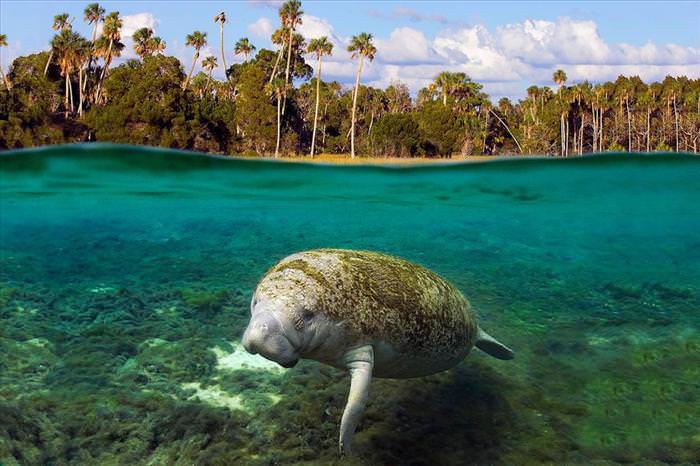 |
| Manatees usually prefer warmer waters. This photo was taken at the warm water spring in Kings Bay. The West-Indian manatee is an endangered and protected species, and the Crystal River National Wildlife Refuge is one of the habitats that preserves the dwindling manatee population. |
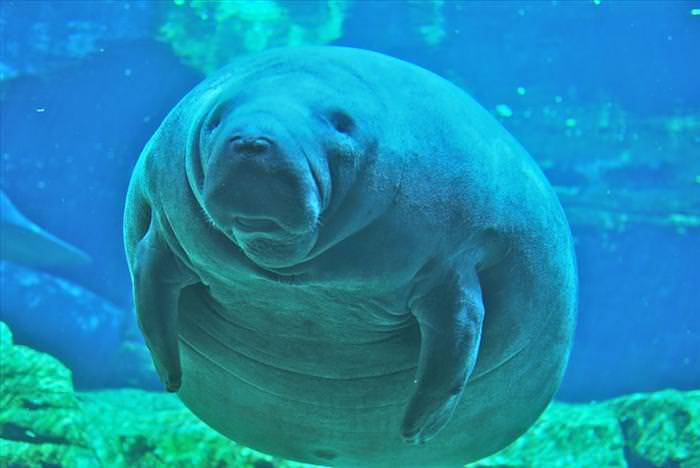 |
| The oldest manatee in captivity is Snooty, at the South Florida Museum. He was born at the Miami Seaquarium on July 21, 1948 and came to the South Florida Museum in Bradenton, Florida in 1949. Manatees can also be viewed in a number of European zoos, such as the Tierpark in Berlin, the Nuremberg Zoo, in ZooParc de Beauval in France and in the Aquarium of Genoa in Italy. Snooty was the first to teach us how smart manatees can be, as it is able to remember the voices of previous handlers and even remembers tricks it learned when no more than a year old. Beforehand, people used to think manatees are as slow mentally as they are in the water. Today, scientists believe they may be as intelligent as dolphins in some skills, especially problem solving. |
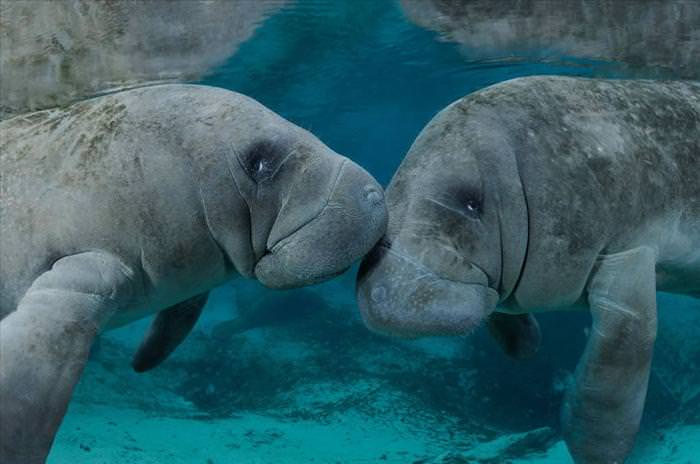 |
| Manatees swim slowly, averaging about 5-8 kph (3-5 mph). But when they need to, they are able to 'sprint' for short bursts of up to 30 kph (20 mph). |
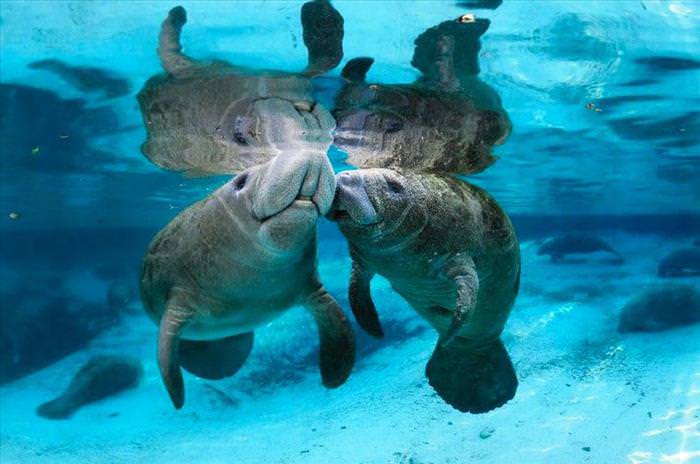 |
| This spectacular photo won 2nd place at a recent national wildlife photography contest, and was taken at the Crystal River National Wildlife Refuge. |
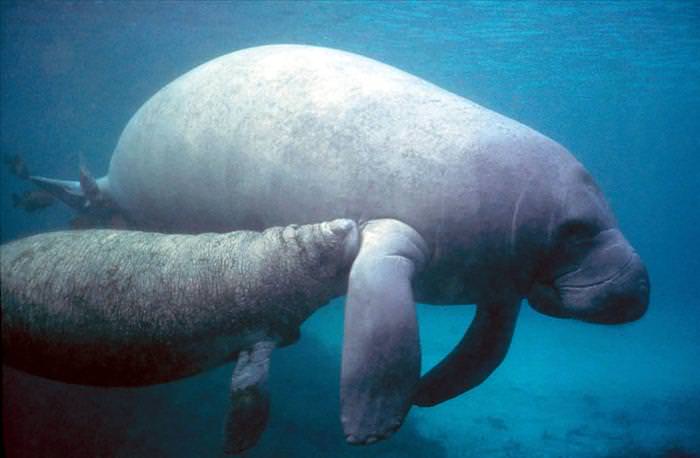 |
| Manatee calves weigh about 30 kilograms at birth (40-60 pounds) and are about 1 meter long (3-4 feet). They grow up to three times that size and can weight up to 200-300 kilograms (1000 pounds). But some manatees have been recorded to have sizes of 13 feet (4 meters) and a weight of up to a ton! |
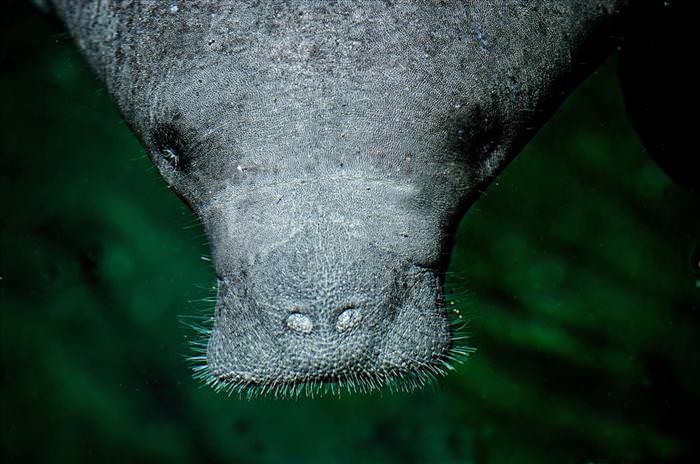 |
| This photo was taken in Florida, Williamsburg. Manatees have seal shaped bodies with a round tail that resembles a paddle. Most are grey, ranging from light brown to black. They usually have lots of big whiskers on their snout and muzzle. |
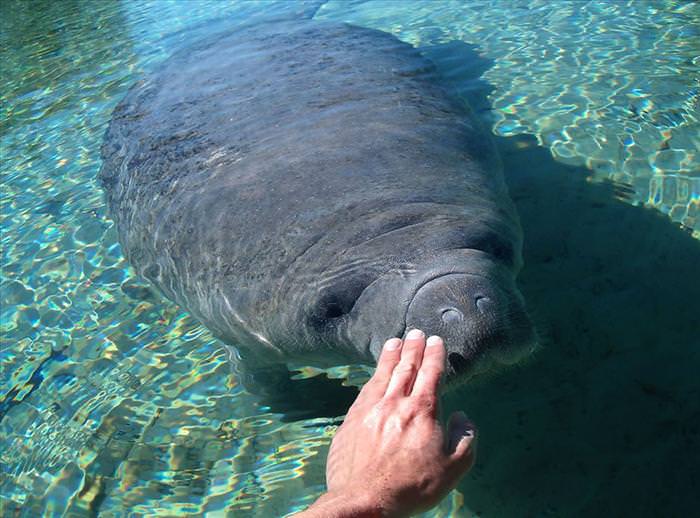 |
| Some manatees seem to like being rubbed on the snout. |
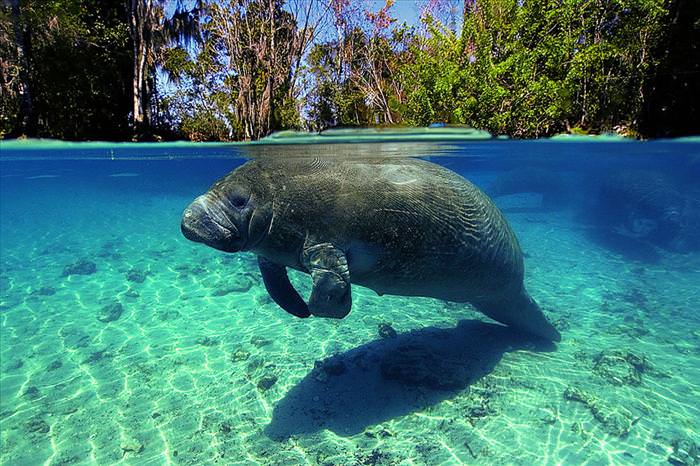 |
| A beautiful photo of a manatee at rest in shallow, warm waters. This is their favorite environment. |
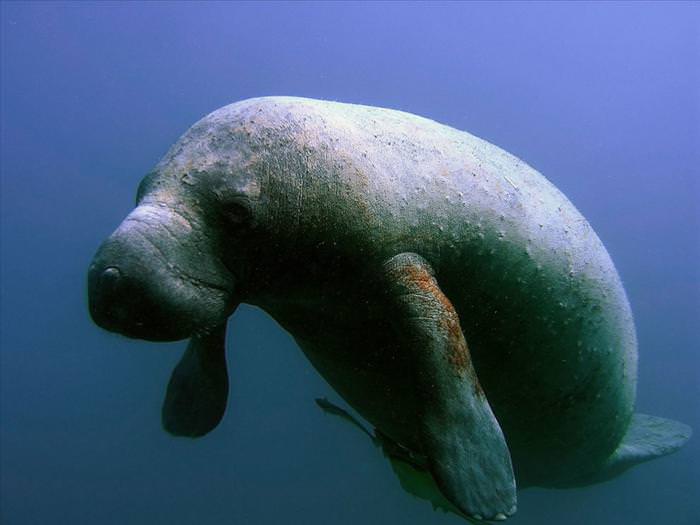 |
| Because of their slow movement, manatees are often hit by boats and get injured or die. This is part of the reason why these peaceful herbivores are on the protected list. |
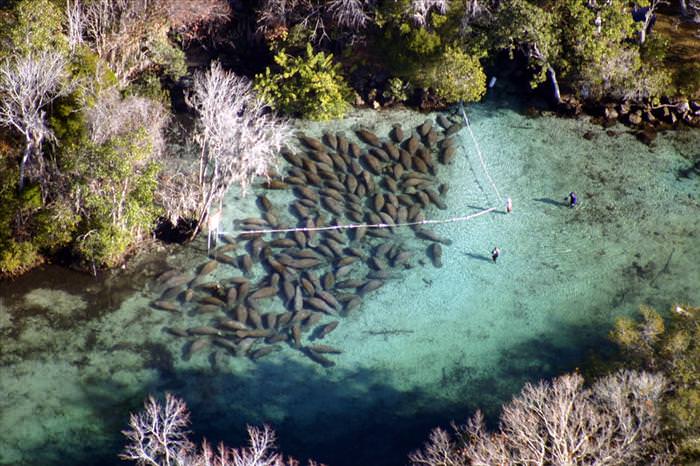 |
| A group of manatees resting together on a cold day. |
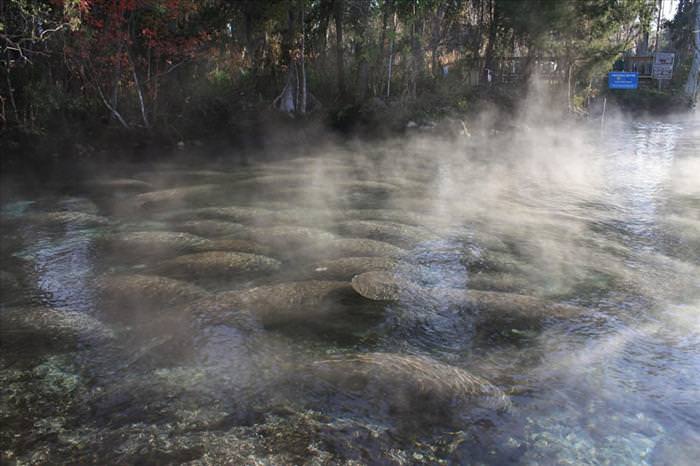 |
| A closer look at the group. |
 |
| Manatees slowly swimming under the kayaks of visitors to the Blue Spring State Park in Florida. |
 |
| Manatees comprise three of the four living species in the order Sirenia. The fourth is the Eastern Hemisphere’s dugong. The Sirenia are thought to have evolved from four-legged land mammals over 60 million years ago, with the closest living relatives being the Proboscidea (elephants) and Hyracoidea. (Wikipedia). |
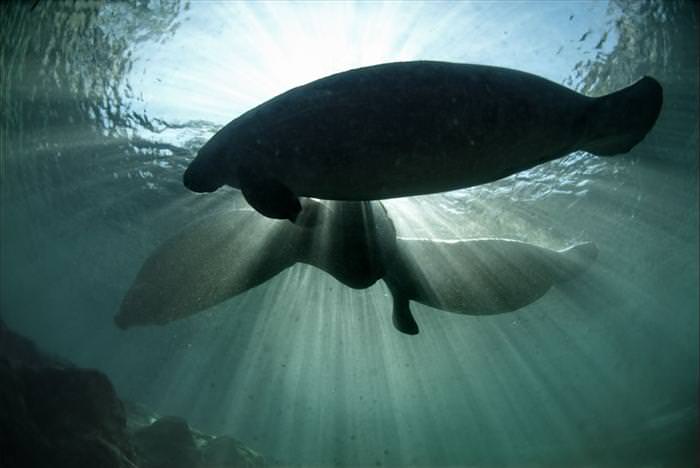 |
| Underneath the shadow of the manatee. |
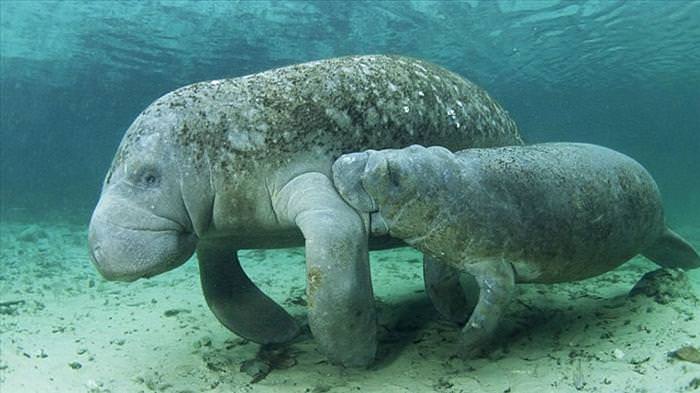 |
| A child manatee with its mother. |
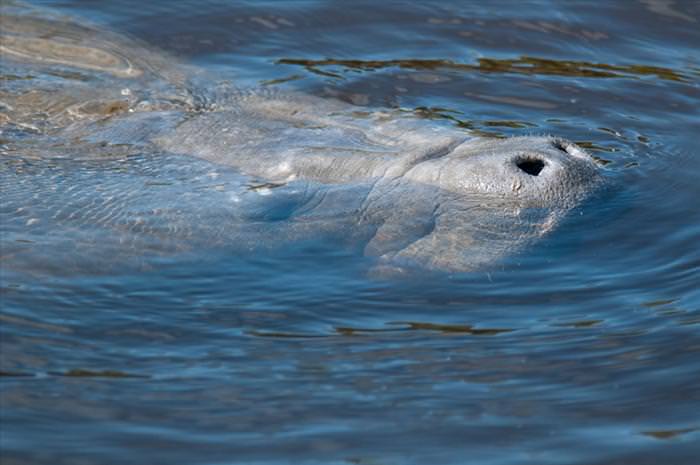 |
| Manatees, being mammals, have to breath air, and so usually will stick out their snout, staying underwater no more than 5 minutes at a time, although they have been recorded as being able to stay up to 12 minutes underwater when needing to. Sticking the nostrils out to breath. |
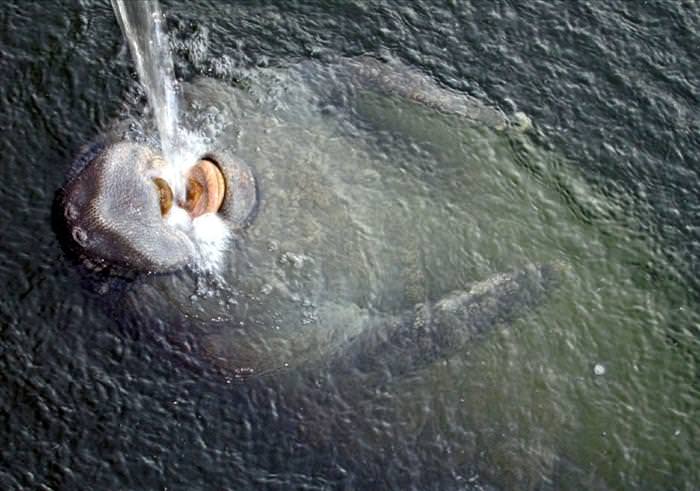 |
| Enjoying some fresh water from a hose. |
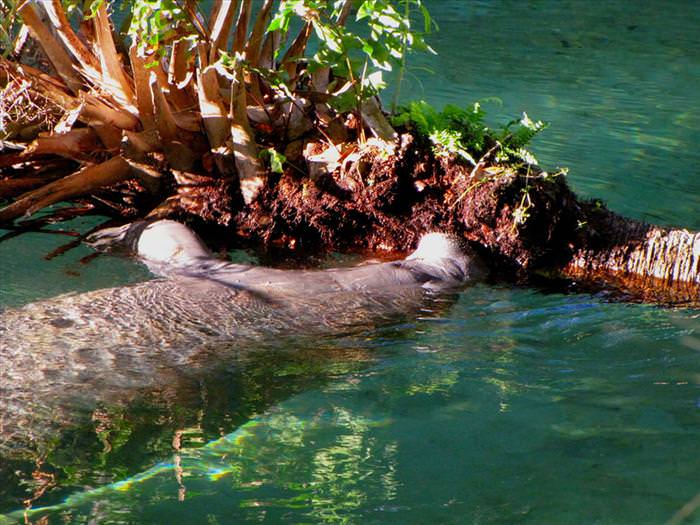 |
| Enjoying a healthy snack of cabbage. |
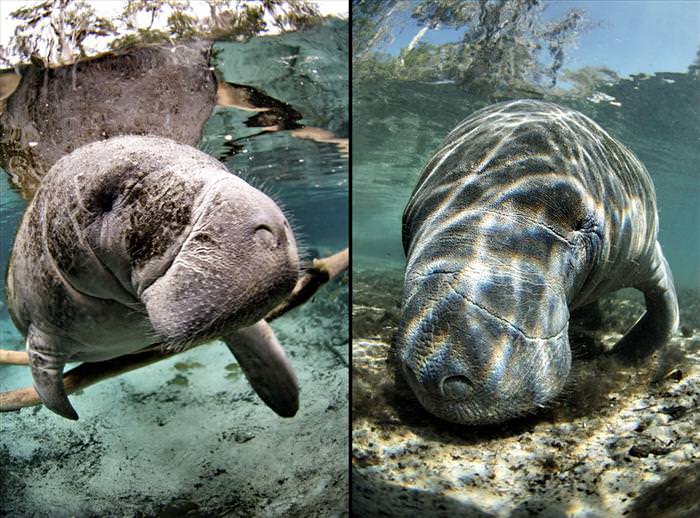 |
| Florida manatees up close. |
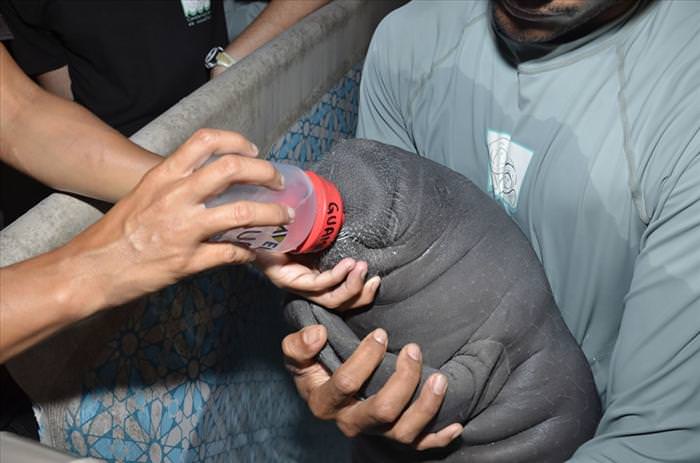 |
| An orphan manatee fed in Cuba. |
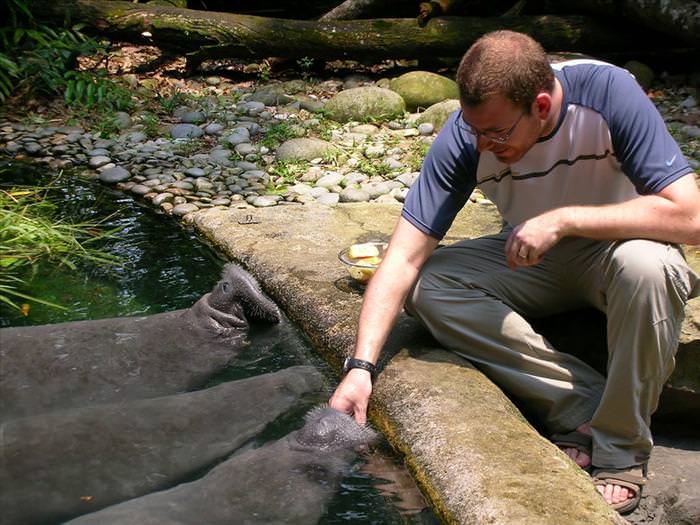 |
| The manatees are so gentle, there is no problem feeding them by hand. |
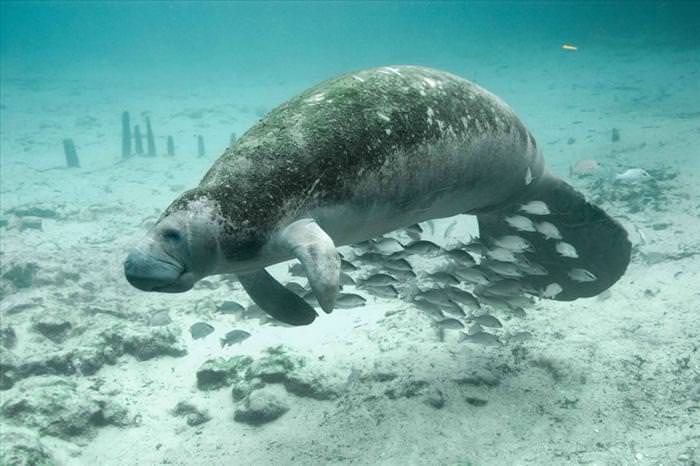 |
| Some fish swim under the slow moving giants, thus escaping the notice of predators swimming above them. |
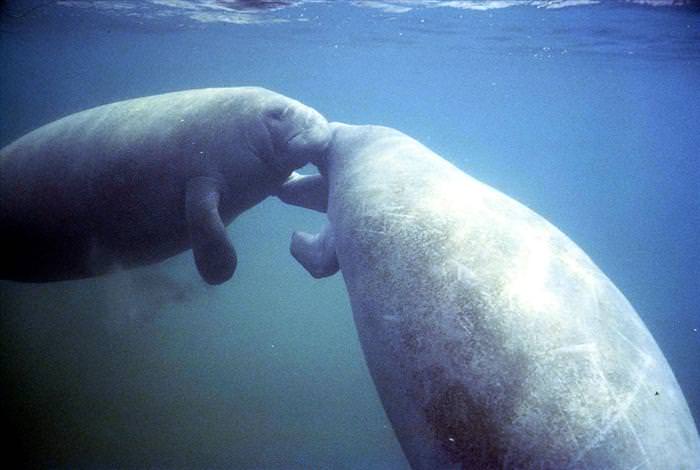 |
| Manatees doing some nuzzling of snouts in affection. |